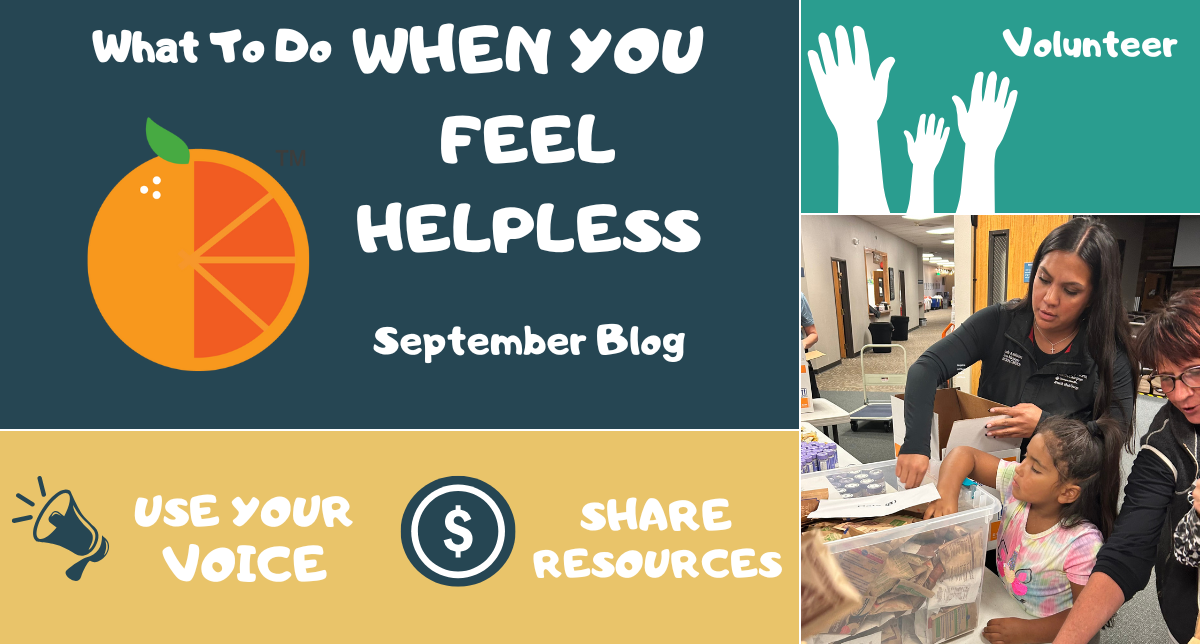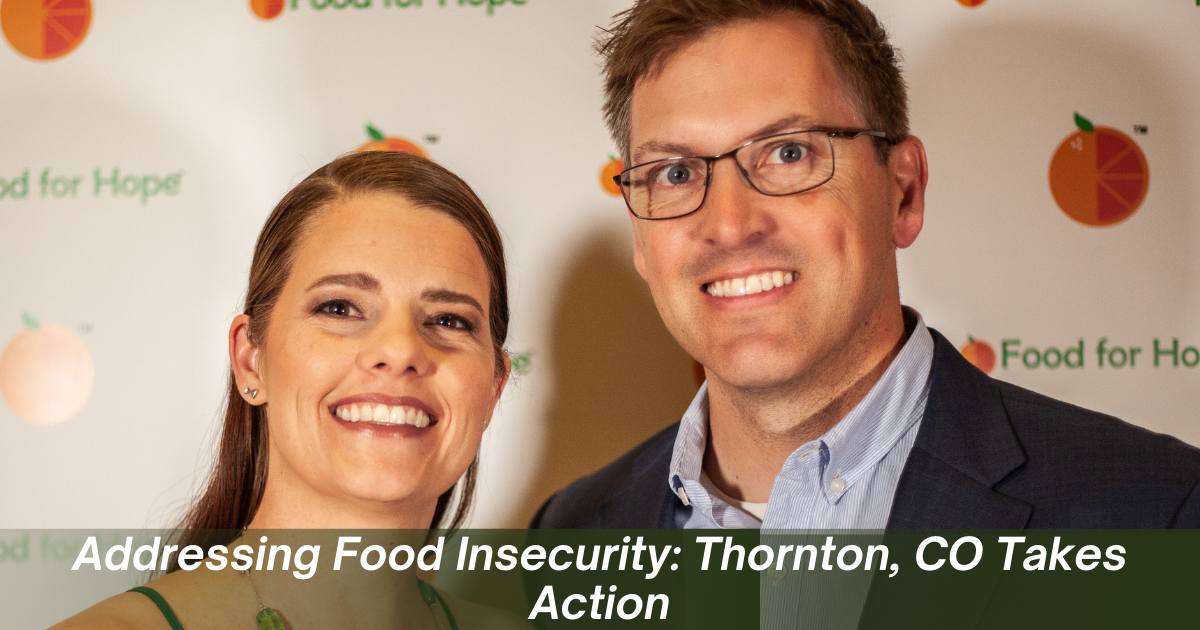Hello! My name is Reba Mackintosh, and I am Food for Hope’s guest blogger for the month of June. You can usually find me deep in spreadsheets or moving about in the warehouse, so I’m excited about this fun change of pace.
I’ve been with Food for Hope for over 4 years. As Director of Operations, my role centers on who Food for Hope serves, what resources we provide, and how we deliver those services effectively. Since everything we do is in partnership with schools in Adams County, this begins with building relationships with school and district staff. I get to learn about each school community and what food needs look like among their students and families, as well as any applicable space or capacity limits. With that information in mind, I determine how Food for Hope can best support families in that community. Once we have programming in place, my team and I work with suppliers to determine “with what” - we look for the best and most relevant foods at the most sustainable prices. Our incredible volunteers help pack and deliver these foods weekly and monthly, and when all is said and done, families have food in their cupboards and we begin planning for the next round.
I wanted to take this opportunity to share some “behind the scenes” of our regular operations, and I figured what better way to do that except to answer some of the most frequently asked questions that I hear. Welcome to my self-interview. 🙂
How does Food for Hope get food to kids?
We work creatively with each school staff person to determine what works best, but food is primarily distributed through our regular weekly programs such as weekend food bags, School Fuel snacks, and in-school food pantries, as well as our special monthly curated box projects.
How do you decide which kids receive weekend food bags?
Well you see, that’s what is so beautiful about Food for Hope’s model: we work closely with the school to determine how to meet the need, but since the school staff knows their families best, they determine who. We rely completely on school staff to connect with families and determine what kinds of resources each family needs. Once we have a headcount, we prepare the food for delivery.
Does Food for Hope purchase the food?
Yes! We purchase roughly 88% of the food we supply to families. We are grateful to receive some donated food through local food drives and donation partners, but financial donations are incredibly impactful to our food purchasing. We can typically make each dollar stretch further through our wholesale and subsidized suppliers than a shopper can at a local market.
Where do you get all of the food?
Our primary supplier is our area Feeding America Food Bank, called Food Bank of the Rockies. We have a wonderful partnership with FBR and we are so thankful for them! Approximately 79% of all of our food comes from FBR. Another nearly 9% of our food is purchased from other suppliers, including local farmers and ranchers, and even from our partners at Costco Business.
The remaining 12% is donated - how amazing is that?! Since July 1, 2024, we have received nearly 12 TONS of donated food! This food was donated by corporate groups, churches, schools, community organizations, scout troops, and many generous individuals. We are truly thankful for these community contributions! One of our favorite food drive models is to station a team of volunteers in front of a local grocery store, and as shoppers head in for their personal purchases, we request that they pick up one or two extra items for the students and families we serve. This method brings in some of our best, most usable food items for pantries. Reach out to us if you’re interested in hosting this type of drive with your group!
How do you decide what food to put in the weekend bags and/or pantries?
This is one of my favorite questions. For our weekend bags, we always include the same types of shelf-stable items: 2 proteins (7g or higher per serving), 1 vegetable, 1 fruit, 1 grain, 2 breakfasts, 1 easy-to-heat meal, and sometimes an extra snack! Our team has fun offering variety week after week to keep these weekend bags fun for kids and their families.
In our food pantries, we work with school staff to learn as much about the needs in their community as possible - dietary needs, cultural preferences, even family sizes. Our volunteers in each pantry also learn this information through conversations with shoppers, and they are quick to share that feedback with us. Once we have these details, we work hard to source relevant foods that families will enjoy in each community.
How does the food get from Food for Hope’s warehouse to the students?
Once food is packed into bags, bins, or totes each week, the critical step of delivering to the schools becomes our next operational focus.
We work monthly with five school districts and a charter school. One of the districts has transportation available to help deliver our weekend bags, School Fuel snacks, and food pantry restocks every week. (Shout out to the amazing Warehouse team at Adams 12 Five Star Schools for the time and energy they spend helping to fulfill Food for Hope’s mission!) We have a team of incredible volunteers that help get food out to the remaining districts. Every Thursday morning, a fleet of volunteer vehicles deliver bags and snacks to assigned schools - all before they begin their day! Then on Friday mornings, a rotation of kind and brave volunteers (our “Truck Team”) load Food for Hope’s box truck to deliver large pantry restock loads to other locations.
I’m amazed every week at how many people are a part of the process of receiving the food, packing it up, and getting it delivered into the hands of the students and families we serve. Observing our community working together to make it all happen is one of the best parts of my job.
What do families do over summer break or long school holidays?
This is a very relevant question - especially at this time of year. If a school is closing during the summer break, our resources also pause. However, we have a few food pantry locations that remain open each summer, and we are able to funnel many families to these sites. Additionally, there are many community resources that families are encouraged to explore and connect with during breaks. One of the best resources I have found is the Food Bank of the Rockies’ Find Food Map. Check it out and feel free to share with anyone you know who might be needing some extra support.
I LOVE to talk about this stuff, probably more than most people want me to - sorry not sorry. I’m incredibly thankful and humbled to be a part of Food for Hope’s ongoing operations. Any time you want to learn more or surprise me with new questions, please do! And if you’ve been touched by hearing more about the how and you’d like to help make it happen, please show your support through a financial donation, a volunteer project, or even by organizing a food drive!























